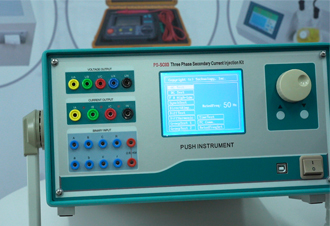 English
English



-
 Afrikaans
Afrikaans -
 Albanian
Albanian -
 Amharic
Amharic -
 Arabic
Arabic -
 Armenian
Armenian -
 Azerbaijani
Azerbaijani -
 Basque
Basque -
 Belarusian
Belarusian -
 Bengali
Bengali -
 Bosnian
Bosnian -
 Bulgarian
Bulgarian -
 Catalan
Catalan -
 Cebuano
Cebuano -
 China
China -
 China (Taiwan)
China (Taiwan) -
 Corsican
Corsican -
 Croatian
Croatian -
 Czech
Czech -
 Danish
Danish -
 Dutch
Dutch -
 English
English -
 Esperanto
Esperanto -
 Estonian
Estonian -
 Finnish
Finnish -
 French
French -
 Frisian
Frisian -
 Galician
Galician -
 Georgian
Georgian -
 German
German -
 Greek
Greek -
 Gujarati
Gujarati -
 Haitian Creole
Haitian Creole -
 hausa
hausa -
 hawaiian
hawaiian -
 Hebrew
Hebrew -
 Hindi
Hindi -
 Miao
Miao -
 Hungarian
Hungarian -
 Icelandic
Icelandic -
 igbo
igbo -
 Indonesian
Indonesian -
 irish
irish -
 Italian
Italian -
 Japanese
Japanese -
 Javanese
Javanese -
 Kannada
Kannada -
 kazakh
kazakh -
 Khmer
Khmer -
 Rwandese
Rwandese -
 Korean
Korean -
 Kurdish
Kurdish -
 Kyrgyz
Kyrgyz -
 Lao
Lao -
 Latin
Latin -
 Latvian
Latvian -
 Lithuanian
Lithuanian -
 Luxembourgish
Luxembourgish -
 Macedonian
Macedonian -
 Malgashi
Malgashi -
 Malay
Malay -
 Malayalam
Malayalam -
 Maltese
Maltese -
 Maori
Maori -
 Marathi
Marathi -
 Mongolian
Mongolian -
 Myanmar
Myanmar -
 Nepali
Nepali -
 Norwegian
Norwegian -
 Norwegian
Norwegian -
 Occitan
Occitan -
 Pashto
Pashto -
 Persian
Persian -
 Polish
Polish -
 Portuguese
Portuguese -
 Punjabi
Punjabi -
 Romanian
Romanian -
 Russian
Russian -
 Samoan
Samoan -
 Scottish Gaelic
Scottish Gaelic -
 Serbian
Serbian -
 Sesotho
Sesotho -
 Shona
Shona -
 Sindhi
Sindhi -
 Sinhala
Sinhala -
 Slovak
Slovak -
 Slovenian
Slovenian -
 Somali
Somali -
 Spanish
Spanish -
 Sundanese
Sundanese -
 Swahili
Swahili -
 Swedish
Swedish -
 Tagalog
Tagalog -
 Tajik
Tajik -
 Tamil
Tamil -
 Tatar
Tatar -
 Telugu
Telugu -
 Thai
Thai -
 Turkish
Turkish -
 Turkmen
Turkmen -
 Ukrainian
Ukrainian -
 Urdu
Urdu -
 Uighur
Uighur -
 Uzbek
Uzbek -
 Vietnamese
Vietnamese -
 Welsh
Welsh -
 Bantu
Bantu -
 Yiddish
Yiddish -
 Yoruba
Yoruba -
 Zulu
Zulu
transformer core ground test
Understanding Transformer Core Ground Tests Importance and Procedure
Transformer core ground tests play a crucial role in ensuring the reliability and safety of electrical power systems. Transformers, being essential components in power distribution and transmission, are designed to handle high voltage levels and must operate efficiently to prevent failures and safety hazards. Among various maintenance practices, ground testing of the transformer's core stands out as a vital procedure.
The primary objective of a transformer core ground test is to verify the integrity of the core grounding system. Proper grounding is fundamental to protecting both the transformer and the connected electrical infrastructure from various electrical anomalies, such as short circuits, lightning strikes, and equipment faults. A well-grounded transformer core helps ensure that any fault currents are safely diverted to the earth, thus minimizing the risk of electrical shock, fire, and equipment damage.
The procedure for conducting a transformer core ground test typically involves several key steps. First, it is essential to ensure that the transformer is de-energized and properly isolated from the electrical system. This ensures the safety of personnel conducting the test and prevents any accidental electrical feedback during the testing procedure.
transformer core ground test

After ensuring safe conditions, technicians usually check the resistance of the grounding system. This is often accomplished using a megohmmeter, which applies a known voltage to measure the resistance of the ground connection. According to industry standards, the resistance should ideally be less than 5 ohms. If the resistance is higher, it may indicate potential issues such as poor connections, corroded ground rods, or inadequate grounding electrodes.
Moreover, insulation resistance testing is performed to evaluate the quality of the insulation materials used in the transformer. This helps determine whether there are any deteriorations or leaks that could compromise the transformer's operation. Insulation resistance readings should typically show values above a certain threshold, with lower readings indicating potential problems that need correction.
After the tests are performed, the data collected must be analyzed carefully. Any abnormal readings or inconsistencies in the results can indicate underlying issues that may require remedial actions, such as repairing grounding connections or reinforcing the grounding system. It is essential to document all findings and actions taken during the test to maintain a thorough maintenance record.
In conclusion, transformer core ground tests are an integral part of electrical systems maintenance. These tests not only ensure the safety and efficiency of transformers but also help in prolonging their lifespan. Regular testing and proper maintenance can significantly mitigate the risks associated with transformer operation, providing a safe and stable power supply for consumers. As the demand for electricity continues to grow, maintaining transformer reliability through rigorous testing has never been more critical.
-
Testing Equipment Industry Sees Major Advancements in 2025: Smart & Precision Technologies Lead the WayNewsJun.06,2025
-
Applications of Direct Current Generators in Renewable Energy SystemsNewsJun.05,2025
-
Hipot Tester Calibration and Accuracy GuidelinesNewsJun.05,2025
-
Digital Circuit Breaker Analyzer Features and BenefitsNewsJun.05,2025
-
Benefits of Real-Time Power Quality Monitoring Devices for Industrial EfficiencyNewsJun.05,2025
-
Earth Fault Loop Testing in High-Rise Building Electrical SystemsNewsJun.05,2025



